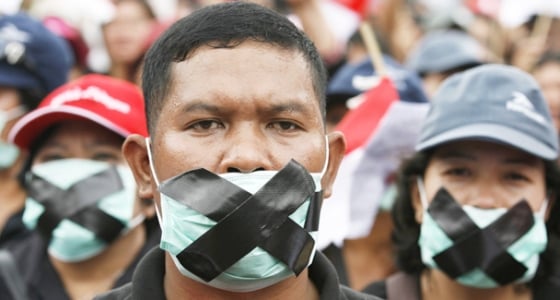By: Charmaine Santos

Minority Health Month is observed every April in the United States in order to raise community awareness on the issues around health disparities among ethnic and racial minorities. The commemorated month of April dates back to the leadership from Dr. Booker T. Washington in 1915. Since then, reports such as the Report of the Secretary’s Task Force on Black and Minority Health written by the U.S. Department of Health and Human Services has defined minorities to be Blacks, Hispanics, Native Americans, and Asian/Pacific Islanders. Reports like these describe the unequal health and health care experience of ethnic and racial minorities in the United States.
Every January Americans celebrate the anniversary of the enactment of the Emancipation Proclamation as well as National Slavery and Human Trafficking Prevention Month. The Federal Strategic Action Plan on Services to Victims of Human Trafficking in the United States was released last year and calls for the “coordination, collaboration, and capacity of victim services across government and with non-public partners” (Rollins). The majority of victims in the United States are people of color. Sex trafficking victims whose race was known, was confirmed by a 2013 Department of Justice report: 40 percent were Black, 26 percent were White, 23 percent were Hispanic, 4 percent were Asian, and 6 percent were other. For confirmed labor trafficking victims, 56 percent were Hispanic, 18 percent were other, 15 percent were Asian, 10 percent were Black, and 2 percent were White.
Linking the problems of human trafficking and minority health, however, starts with an open discussion surrounding the social circumstances of health (where people grow up, live, etc.) that impact victim demographics and underserved populations. We are starting to view human trafficking not as just a law enforcement issue, but as a public health problem, which promotes the exchange of ideas and best practices in the minority health field.
Actions we can do to help combat minority health and human trafficking could be to amplify messages during ethnic and racial awareness months and to also research the basics of minority health and human trafficking. In addition, we need to ensure that systems are implementing National CLAS Standards (Culturally and Linguistically Appropriate Services in Health and Health Care) so all individuals receive appropriate care. To progress and induce social change, we must work together by increasing our knowledge between minority health and human trafficking and use that expertise to plan and implement possible solutions.
—
Charmaine Santos is a sophomore at the University of San Francisco pursuing a Bachelors of Science in Biology as well as minors in Chemistry and Health Studies. She volunteers alongside UCSF medical students at a student-run homeless clinic in San Francisco and is also an active volunteer with Operation Access. Charmaine is also a Social Media Assistant at Cancer InCytes Magazine.
—
Reference:
Rollins, Rochelle. (2015, April 21). “Bridging Minority Health and Human Trafficking.” U.S. Department of Health and Human Services. Retrieved May 2, 2015 from http://www.acf.hhs.gov/blog/2015/04/bridging-minority-health-and-human-trafficking
Photo Credit: (Reuters) http://www.thepersecution.org/world/indonesia/10/08/dawn16.html